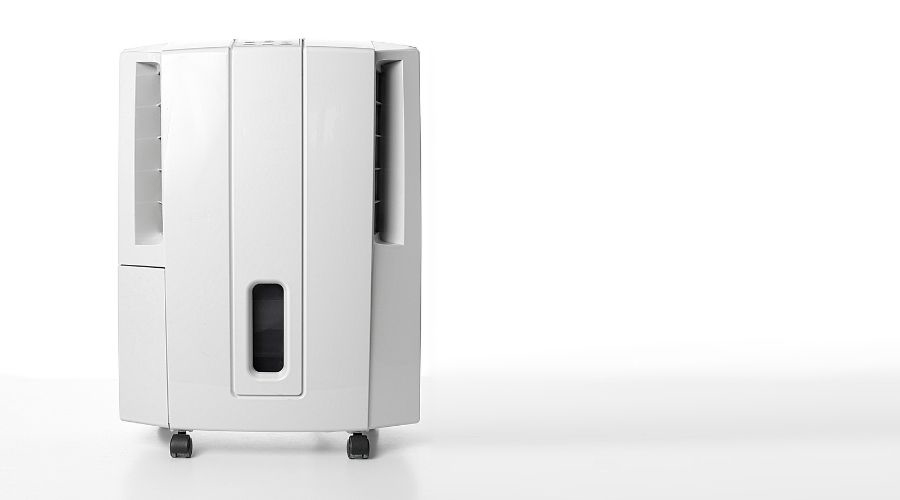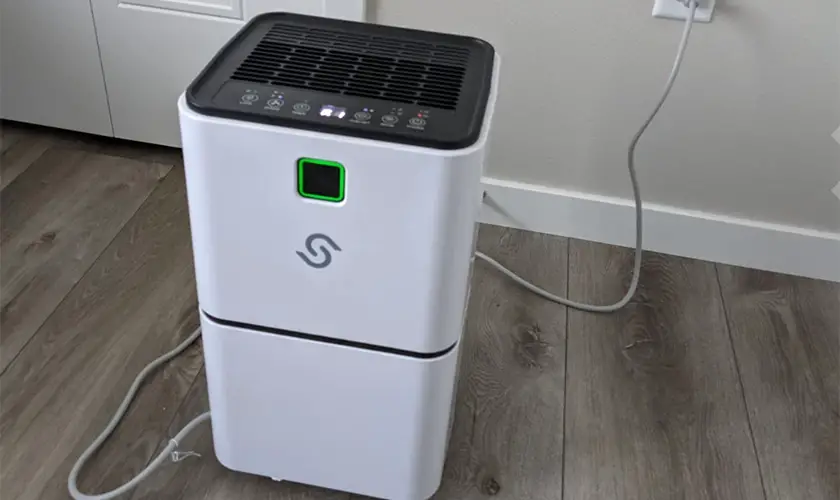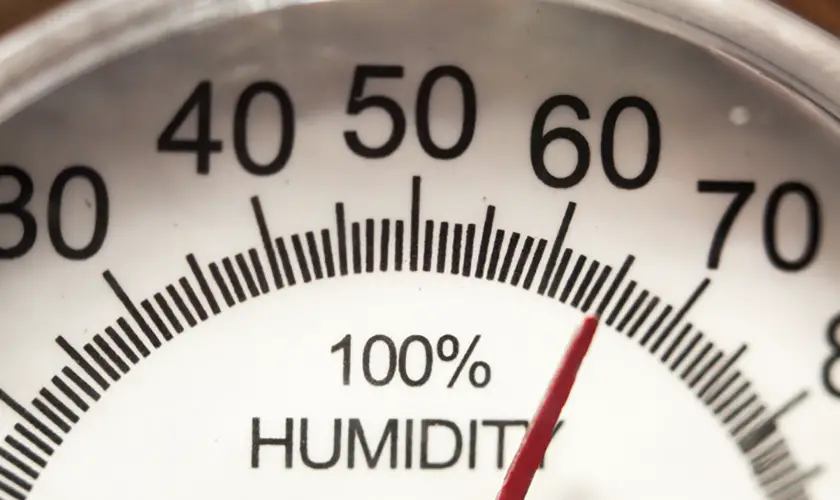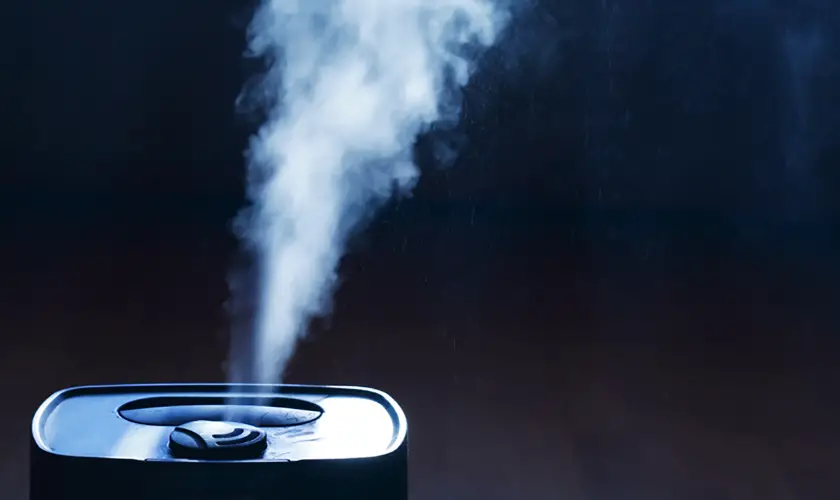
Dehumidifiers work best at a certain level of temperature. Like all appliances (and sometimes even people), they operate best when put in an optimal environment. However, can these devices work in a colder room?
Dehumidifiers can operate in cold rooms, but they may not be as efficient as warmer rooms with suitable models and types. In that case, make sure you gather the correct information to find what is best for your space.
Whether you are unsure of having a dehumidifier in your room, this article will help you determine how suitable it is for your needs.
What is a Dehumidifier & What are the Benefits?
1. Dehumidifiers Extract Moisture
A dehumidifier is the opposite of a humidifier. It is an appliance that removes any extra moisture that is in the air. It will create a drier environment whether your room is cold or hot.
Eliminating excess moisture helps for many reasons, such as:
- Reducing mold and bugs
- Reducing year-round allergies
- Keeping expensive items safe
- Creating easier air to breathe in
2. Dehumidifiers Prevent Mold from Occurring
A dehumidifier can prevent mold from growing and create ease in your living situation. It can make a much cleaner look for your space once the mildew disappears.
Mold and different types of fungus may cause funky smells. A dehumidifier may benefit you if you notice a weird smell coming from a specific area in your space.
3. Dehumidifiers Limits Bug Activity
With mold and mildew come bugs that dehumidifiers can also eliminate. Common bugs you may find that you want to stop are silverfishes, cockroaches, and any millipede or centipede.
Sometimes, if you have a terrible humidity problem in cold weather, bugs can breed. Fleas and mosquitoes thrive in humid conditions, so a dehumidifier can take care of them.
4. Dehumidifiers Help Allergy Problems
If you are someone who commonly experiences allergies, this appliance can also help with that. Or, if you have noticed that your allergy never went away with the change of season as you hoped it would, a dehumidifier might do the trick.
Allergies work differently for everyone, so if you do have symptoms like coughing and itchy eyes, a dehumidifier may help.
5. Dehumidifiers Help Asthma Issues
Along the lines of health, it can also help with asthma because a dehumidifier creates lighter air for you to breathe in. Humid air can be heavy and affect people with asthma, especially in severe cases.
6. Dehumidifiers Ensures Your Belongings Remain Dry
You may live in a space where you have books, an expensive piece of art, or a rare sculpture that needs to be kept in its original condition.
Humidity and the things that come with moisture may damage those items. A dehumidifier can ensure your objects remain in the same condition they should be, which is dry and safe. After all, if it is worth a lot, you want to ensure its upkeep is also being taken care of.
Note that since the dehumidifier creates a drier environment, be mindful if you have any skin conditions that cause your skin to dry. When the dehumidifier operates, take extra precautions to hydrate your skin and yourself.
How Does a Dehumidifier Work?
A dehumidifier uses a refrigerated coil to absorb the moisture from the air. The steam discharges as water into a collection bucket or pump through a hose.
Since it removes the humidity or hot air out of the environment that it is in, the system almost sucks in that hot air using a fan.
The remaining bits are condensation that gets trapped inside a tank that collects the water. Then it releases air that is generally more comfortable than the original air you were breathing.
Dehumidifiers Are Customizable
The cool part about a dehumidifier is that you can customize it to your liking. It will have controls that show what dryness level you want it at.
A dial or buttons will offer a percentage or a way to decrease and increase the level of humidity you want to keep it at.
Controlling the humidity level is crucial because you want to keep it at a level that works best for you. If a 30% humidity level works for someone else, it does not mean it is your best choice.
Some other controls on the appliance might be a timer to set the duration of time you want the machine to run. You may wish the dehumidifier to run during the day but not the night.
Finding a Good Balance
Sometimes the days carry more humidity than the night, so once you find a good balance, you can utilize this feature to help you control that. Timers can also make sure you are not using more of your energy bill than you want to.
You will also be able to control the power level on most dehumidifiers. Controlling the temperature might entail some speed level of a fan. The speed will allow you to control the pace you want the dehumidifier to work at.
If you want to dehumidify your place faster, you can put it at a higher speed, but note that it will increase energy consumption and louder noise.
At What Temperature Do Dehumidifiers Work?
The best temperature for a dehumidifier to work is below 60 to 65 degrees Fahrenheit. This temperature includes the combination of the humidity and general heat levels your space will have.
Humidity connects to hot air. For a dehumidifier to work, you have to feed it hot air so it has something to work with.
However, dehumidifiers can also work in lower temperatures if you get a model specifically for lower temperatures.
Does a Dehumidifier Work Better in a Warm Room?
If we are talking about a traditional dehumidifier, it will work better in a warm room with high humidity levels. A comfortable humidity level for a human is between 30% and 50%.
Anything above that can cause discomfort. Usually, when a room is above that range, say around 70%, the room feels hotter and stuffy.
The dehumidifier will work and get it down to the 30% and 50% humidity rate, which you can control with the appliance.
How Do You Dehumidify a Cold Room?
Regular dehumidifiers work at their optimal performance above 60 degrees Fahrenheit. Some versions of a dehumidifier may work under the standard temperature level, but it may still not be as efficient as if it were warmer than 60 degrees.
You can also start by measuring your space’s humidity level. Some appliances have this feature inbuilt and can measure the initial moisture level. After determining the humidity level is above 50%, you can start the dehumidifier.
Make sure you monitor it regularly, at least when you first start using the appliance. This way, if something were to go wrong, you can quickly turn off the machine and prevent harm from happening.
Do Dehumidifiers Work in Cold Temperatures?
Not all dehumidifier models will work in cold temperatures. You will need to find one specifically better for a cold environment. There is a dehumidifier called a desiccant humidifier which works in colder temperatures.
Desiccant Dehumidifiers
This kind of appliance works well in cold and warm temperatures. It can also double as an option to keep your room more comfortable.
Unlike other dehumidifiers, the desiccant can release warmer air than what a standard appliance of its sort would do because it is the air that is appropriately livable.
A couple more differences about this type of dehumidifier are that it can be more expensive. It is more costly because they are different than standard dehumidifiers that you may see out there.
However, even if you end up paying more than expected, they come with additional perks. They are easier to maintain and can be easy to transport.
Dehumidifiers have something called a compressor in them. However, desiccant dehumidifiers do not have that in them, making them easier to maintain and move around if you relocate them to different rooms. It also allows for them to be quieter than standard dehumidifiers.
Other Types of Dehumidifiers
We covered the type that works better in cold rooms. What about if you have a place both on the cooler and warmer end? There are other types of devices out there called compressors and whole-house dehumidifiers.
Compressor Dehumidifier
These are probably some of the most common dehumidifiers. It takes in the hot air and uses a refrigerant to cool it.
It will not be the best for super cold rooms, only moderately cold rooms around 60 degrees and above. Then it uses one of its coils to revert the air temperature to normal and releases it back into the environment.
Unlike desiccant dehumidifiers, compressor dehumidifiers use less energy and are not as expensive. However, they are larger and heavier in weight.
| Type | Cheaper | Noisy | Heavier | Cold Temperatures | Low Maintenance |
| Desiccant | X | X | |||
| Compressor | X | X | X |
Whole House Dehumidifier
This whole house dehumidifier keeps your house properly ventilated because it works hand in hand with your house’s ventilation system.
They require minimal effort on the dehumidifier scale and usually keep running at all times. The cost is cheaper because it can allow you to use the air conditioning less.
What Happens if I Turn on My Dehumidifier in a Cold Environment?
You want to ensure that you monitor your dehumidifier for a little while when you first turn it on in a cold climate under 60 degrees Fahrenheit.
The worst thing that could happen is that you will damage your appliance if it operates for a while, well under 60 degrees Fahrenheit.
The unit can get damaged by essentially freezing. The coils inside that dehumidifier can get damaged when moisture from the outside air is removed.
Consider turning on the heater before operating the dehumidifier so the environment is at an optimal temperature.
If your dehumidifier is in a place where it has access to sunlight, consider opening the windows so that it can create a warmer space.
If you live in a place with harsh colds, make sure you do not turn the dehumidifier on. Extreme weather will damage the unit, and you must find a replacement.
Conclusion
Dehumidifiers will work best in temperatures above 60 degrees Fahrenheit. If you live in an identified place, do not use a dehumidifier with harsh winters and frigid weather. It will damage your appliance.
If you want a humidifier for a cold room, consider using a desiccant dehumidifier over the compressor dehumidifier. For those who want a long-term dehumidifier for all seasons, look into a whole-house dehumidifier.
Always make sure you measure the initial level of humidity first. If the humidity level is above 50%, you can opt to use a dehumidifier to bring it down to between 30% and 50%.
Overall, dehumidifiers have a lot of benefits because they get rid of mildew and bugs and alleviate allergies and asthma symptoms.
Dehumidifiers have a lot of benefits to them! They eliminate gross smells, mold, mildew, bugs, and insects. They can help alleviate allergies and asthma.






